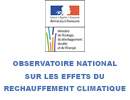Climatic impact of carbonaceous aerosols
Climatic impact of carbonaceous aerosols
Although much more difficult to assess than that of greenhouse gases, the climatic role of aerosols is now an established fact. What is more, it is the subject of a number of debates since a recent American study (Hansen et al., 2000) showed that, in order to reduce climate warming, the effort should concern carbonaceous aerosols as well as greenhouse gas emissions.
The study of the radiative impact of carbonaceous aerosols is only beginning. This impact is complex and multiple, due to the heterogeneity of the geographical distribution of aerosols and to their characteristics. Carbonaceous aerosols are composed of two fractions of variable proportions with antagonistic radiative properties: organic carbon (OC), whose direct radiative effect mainly produces a cooling of the atmosphere, and black carbon (BC), which has a warming effect. Strategies involving the reduction of combustion-related CO2 emissions have a deep impact on the production of carbonaceous particles, since most of them are generated by combustions. Although there exists a simple relationship between fuel consumption (fossil fuels or biofuels) and combustion-produced CO2 emissions, it does not apply to the carbonaceous particles produced by combustions. The quantity of particles emitted and their composition in terms of organic carbon and black carbon, their CCN properties, and the elevation of their injection site in the atmosphere depend on the type of fuel used, on the type of combustion and hence on the technology used.
Whether for taking into account carbonaceous aerosols in climatic models or for being capable of devising particle emission reduction strategies, we need to gain a better understanding of carbonaceous aerosols emissions. Our general objective is initially to explore the 1860-2100 period, producing maps of past, present and future carbonaceous aerosols emissions.
Both components of the carbonaceous aerosol will be studied and a particular attention will be paid given to particulate organic carbon and to its primary and secondary components. At the same time, the two major sources of carbonaceous aerosols will be examined: fossil fuels, with more realistic future scenarios and economically consistent reduction strategies, and biomass fires, taking into account their variations in space and time between 1860 and 2100. Modelling studies will also be initiated, which should yield insights regardingas to the following question interrogation: what carbonaceous aerosol emissions would induce a significant impact on climate at the regional and/or global level compared to that of greenhouse gases (CO2, CH4)?
| Coordinators |
Catherine Liousse , CNRS – Laboratoire d’Aérologie UPS |
| Partnership |
IPSL – LSCE |
| Funding |
MEDD
|
| Budget |
94999.99 € (including tax)
|




